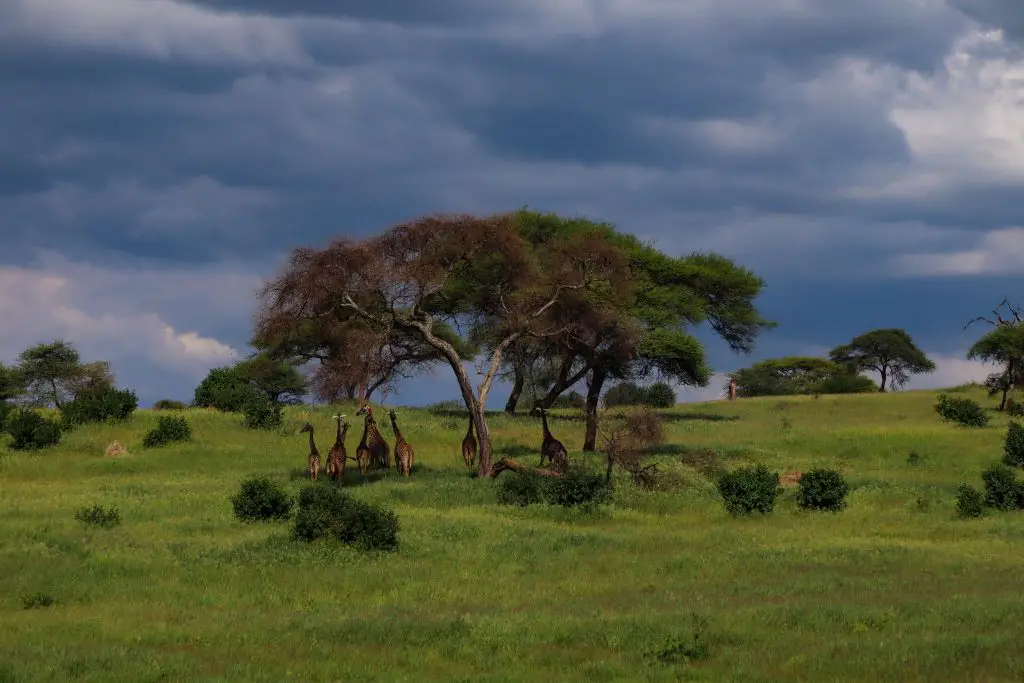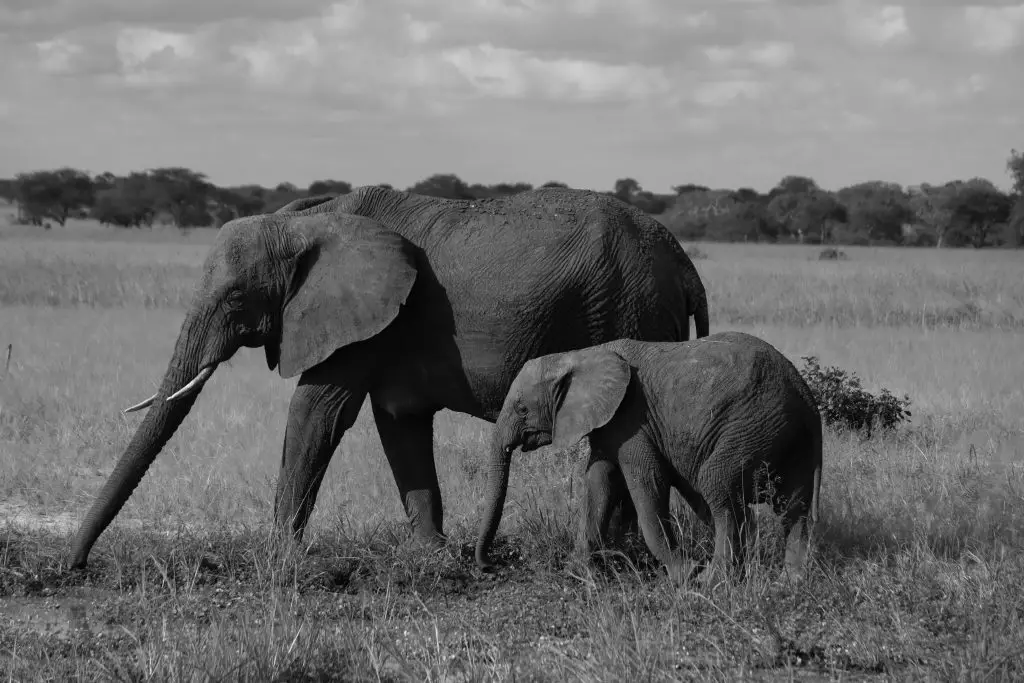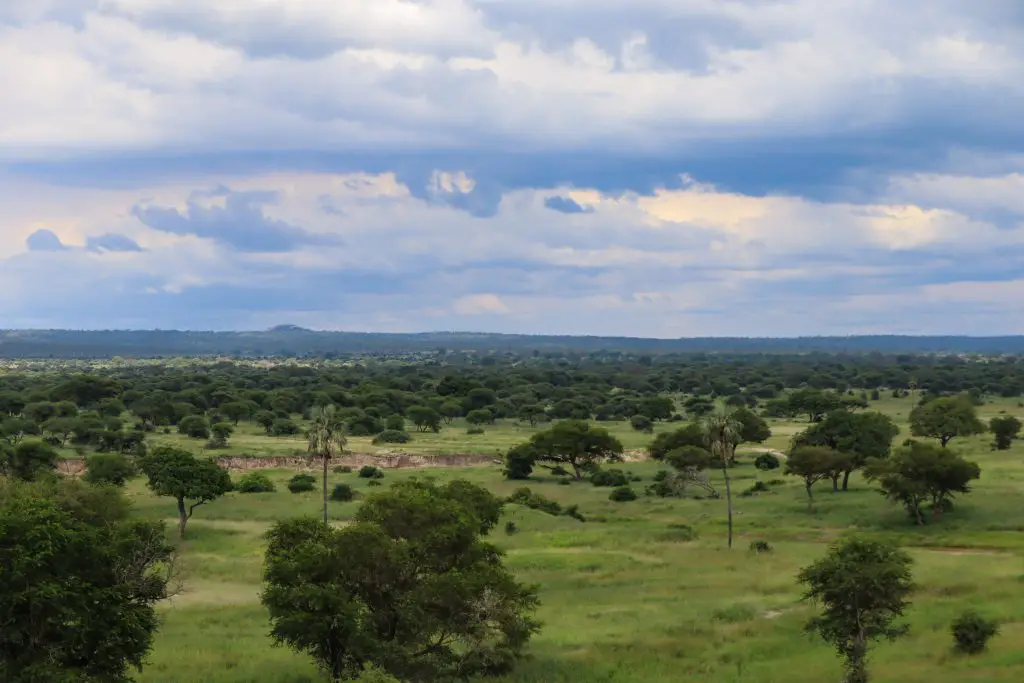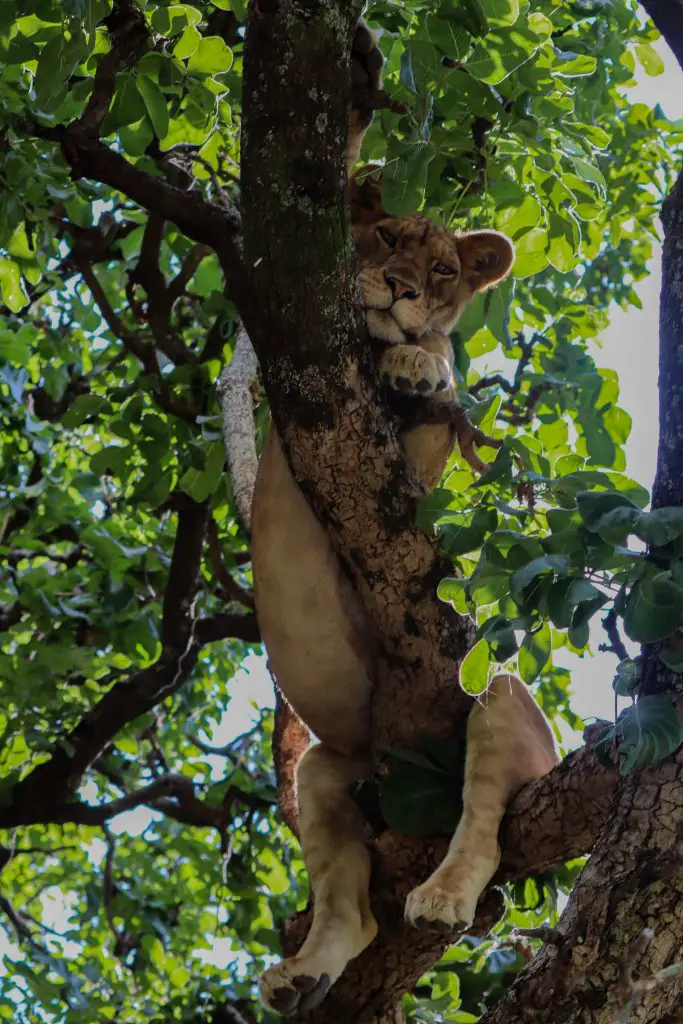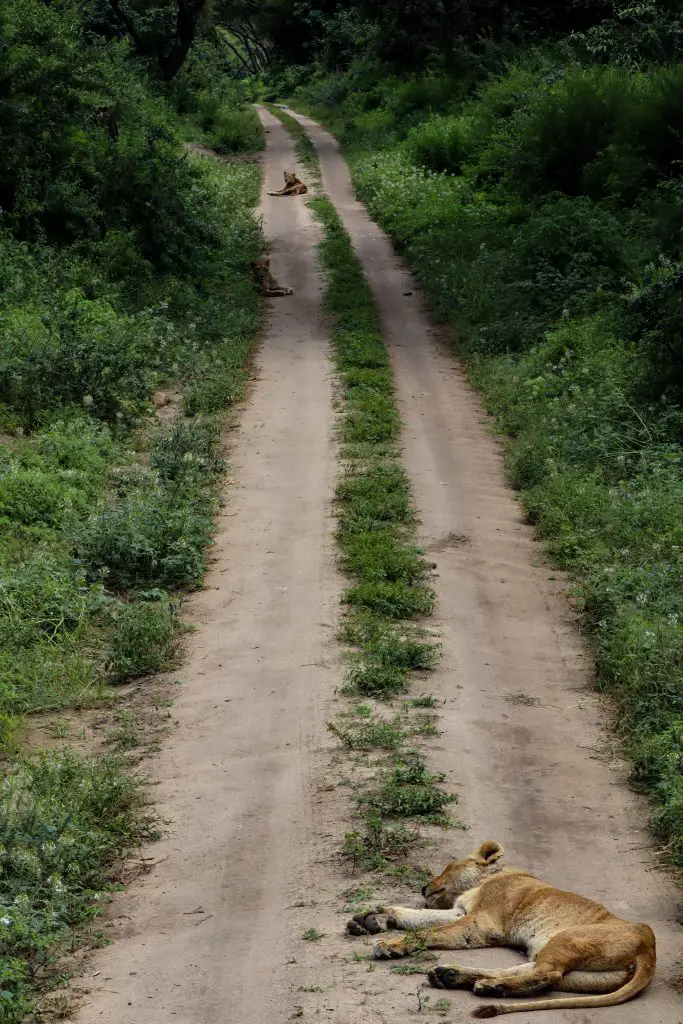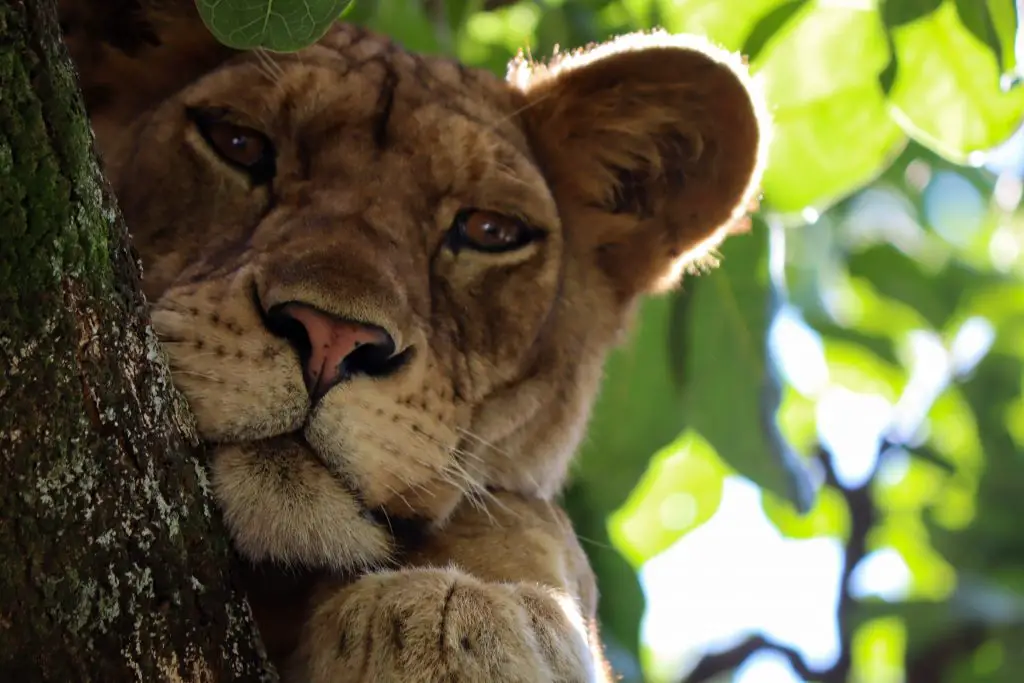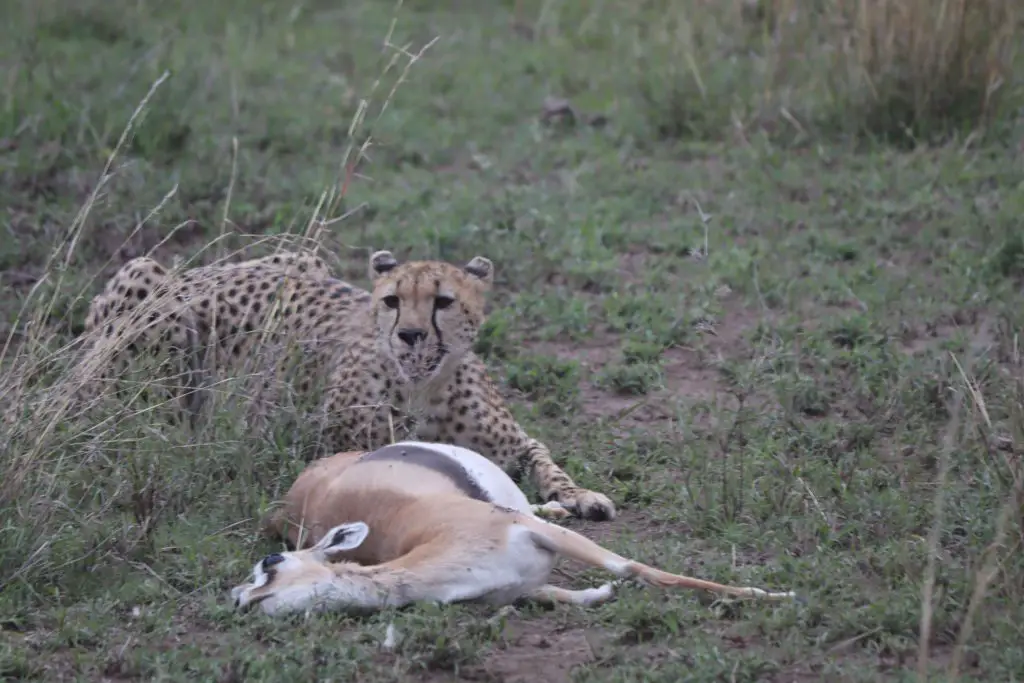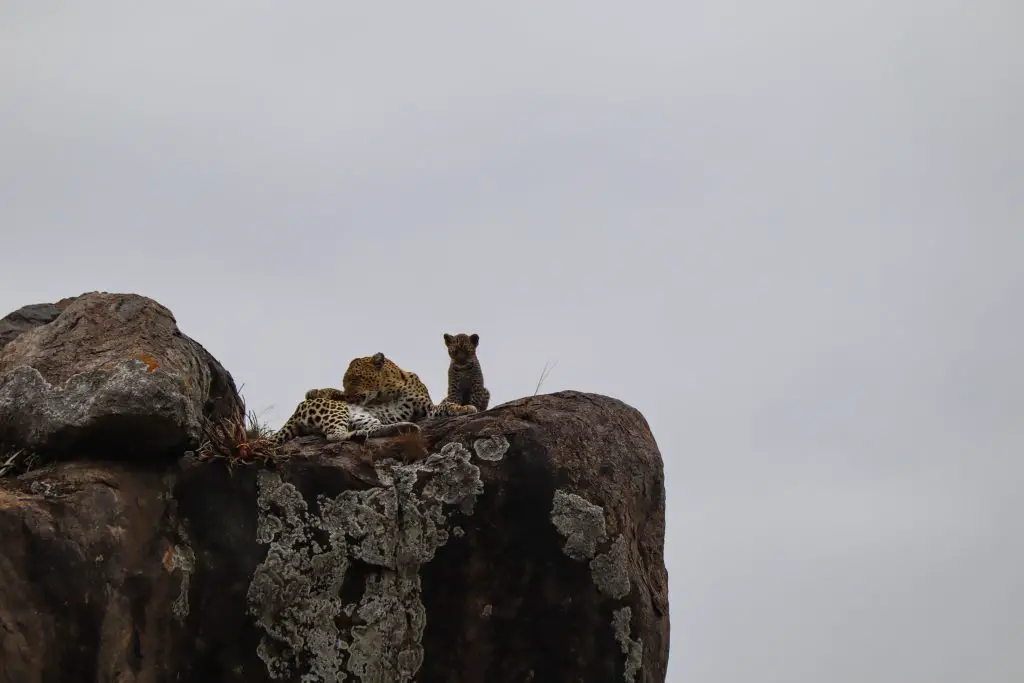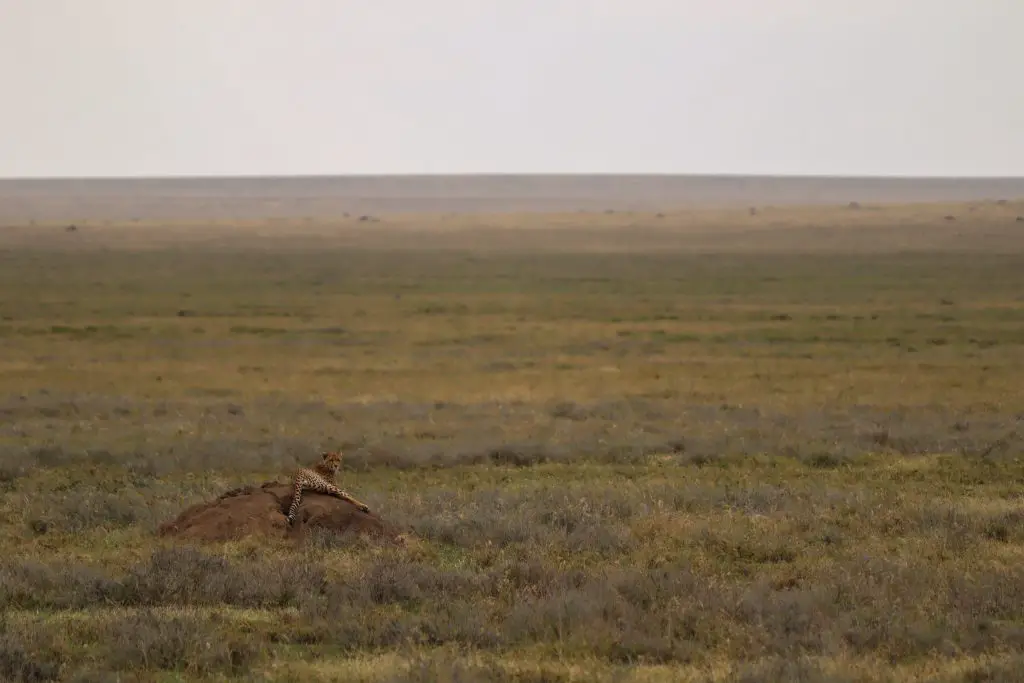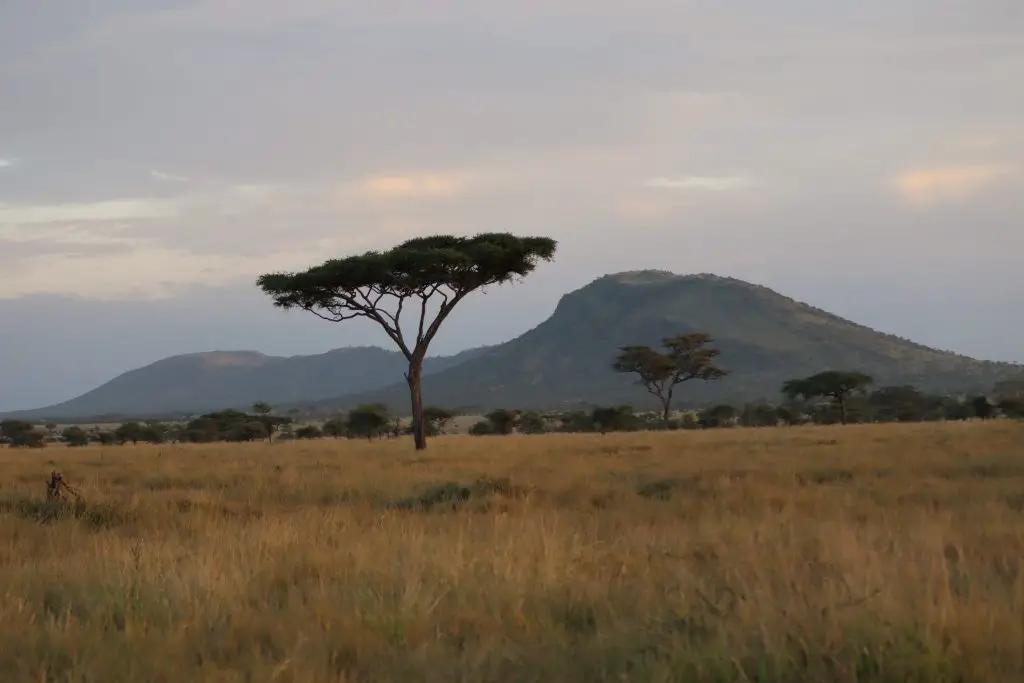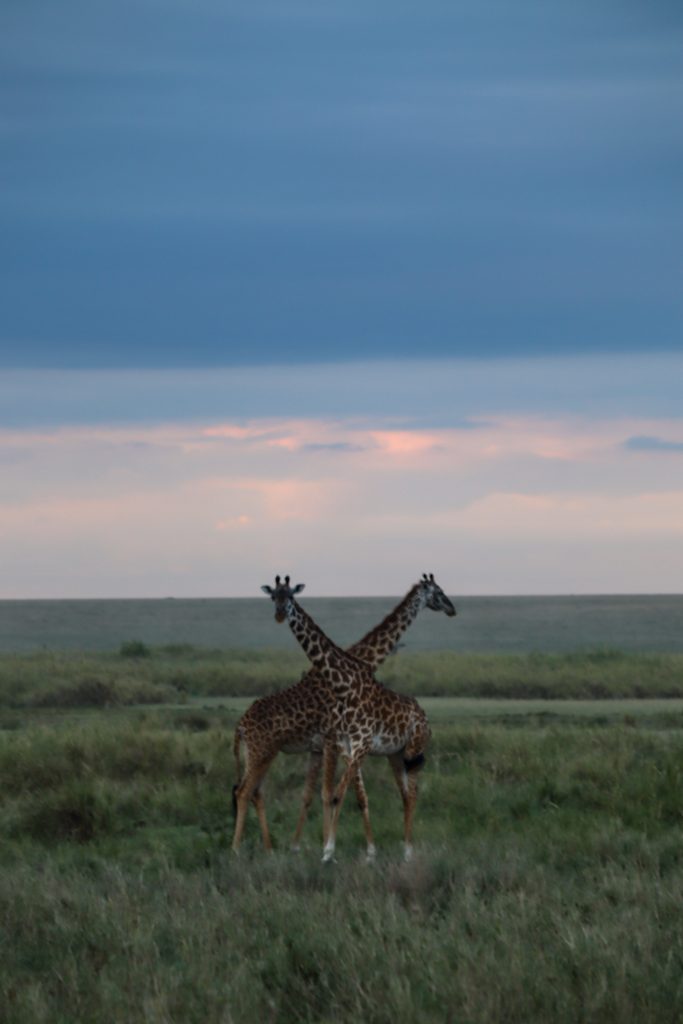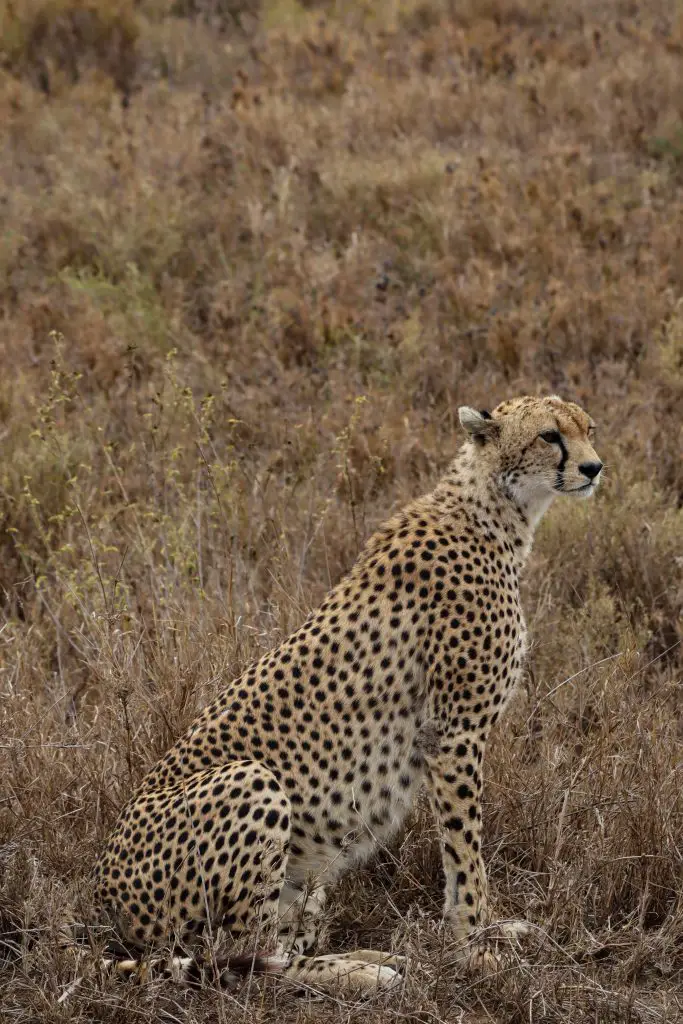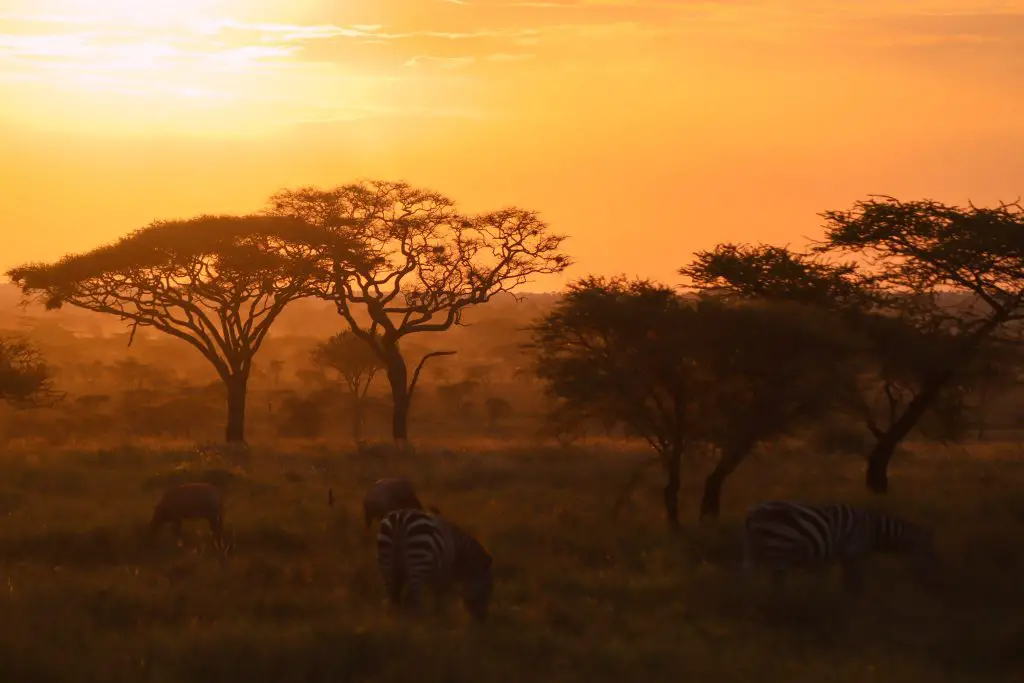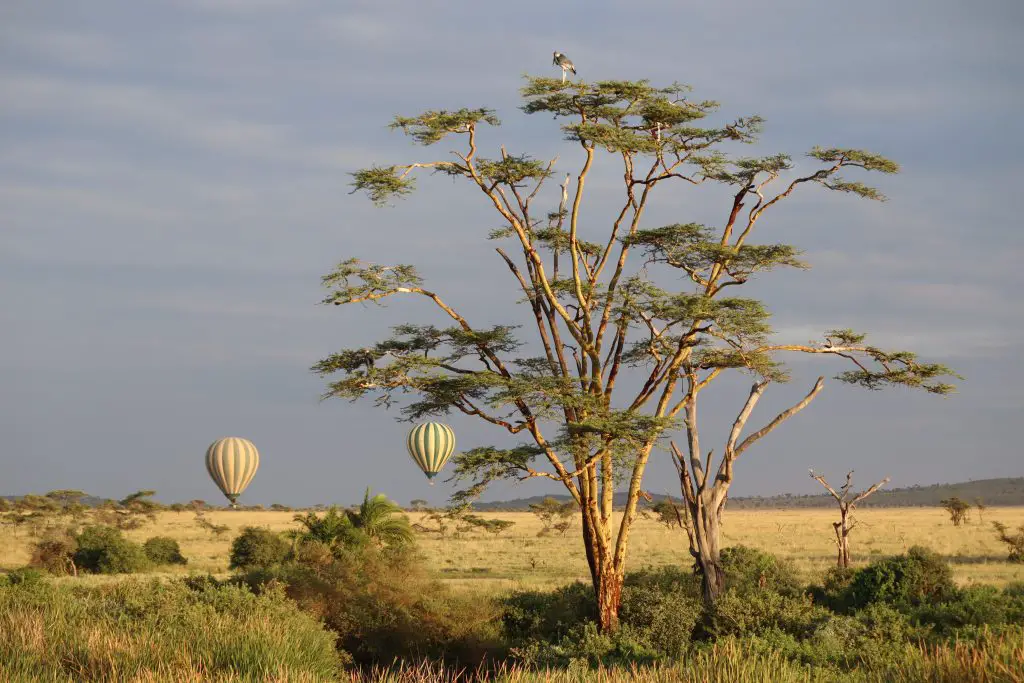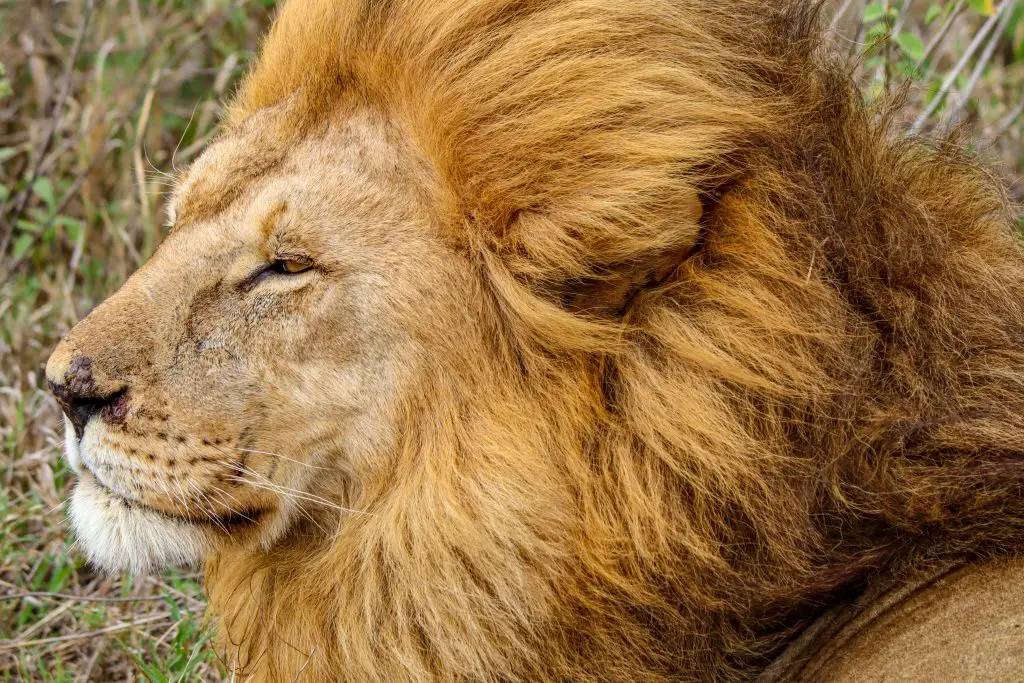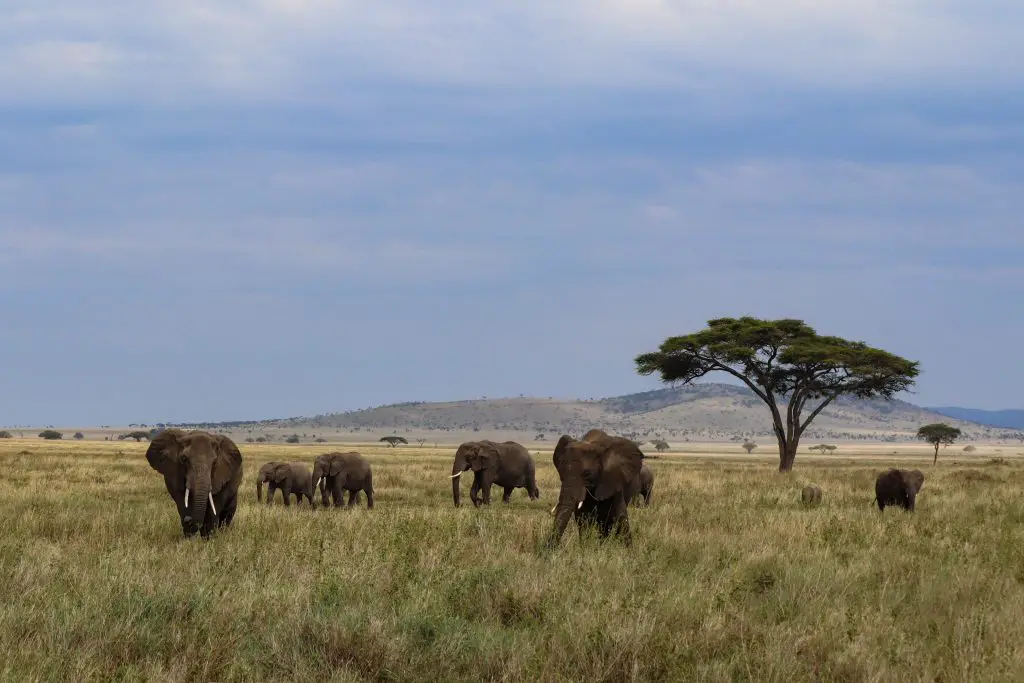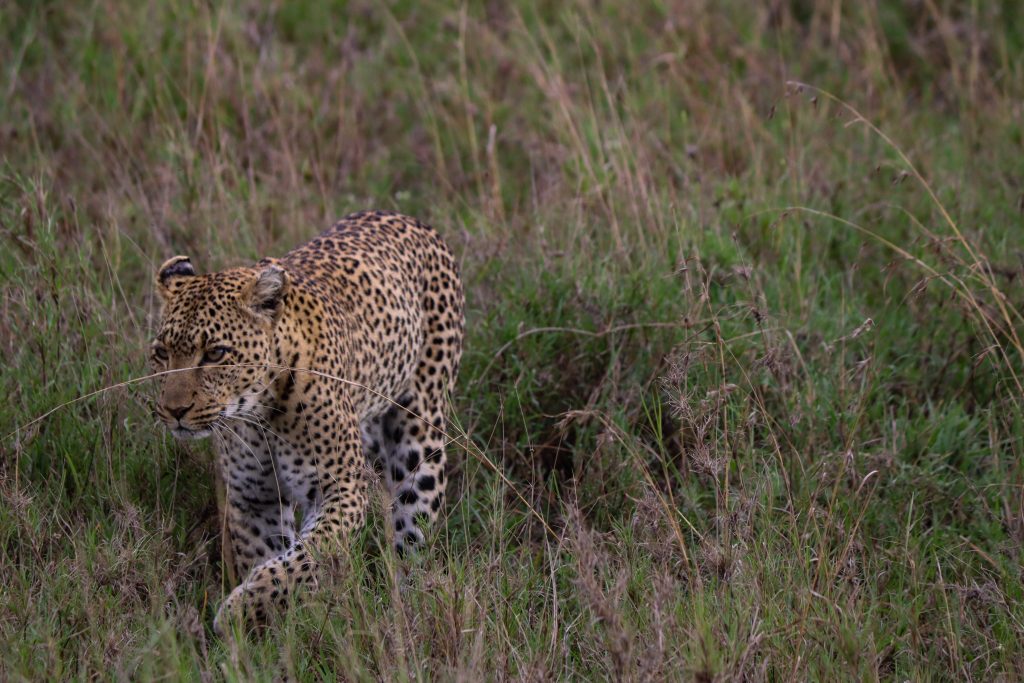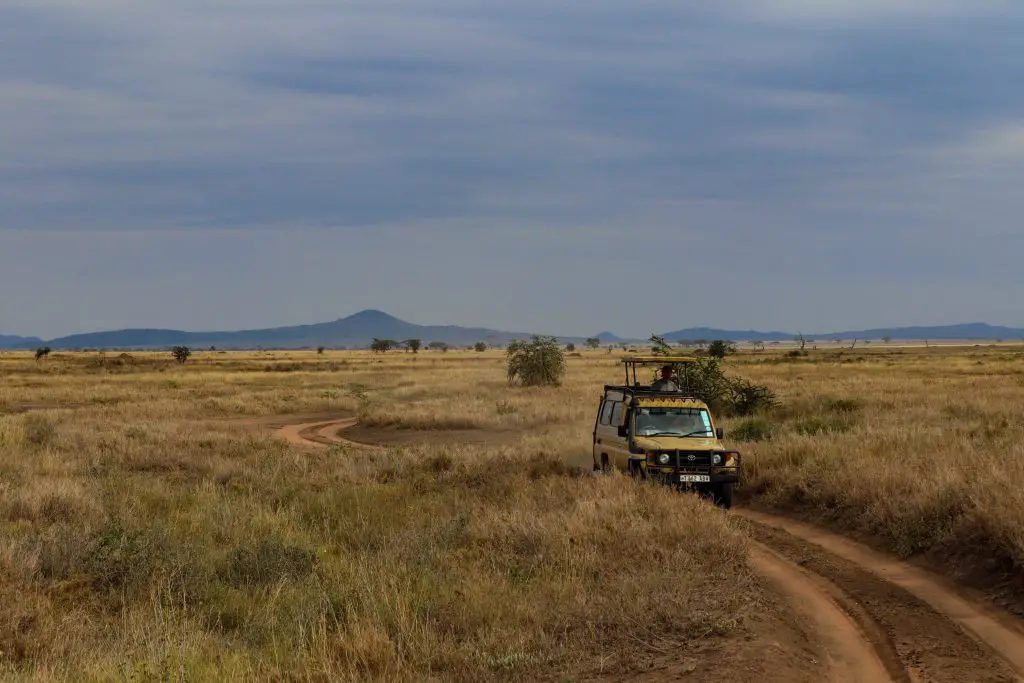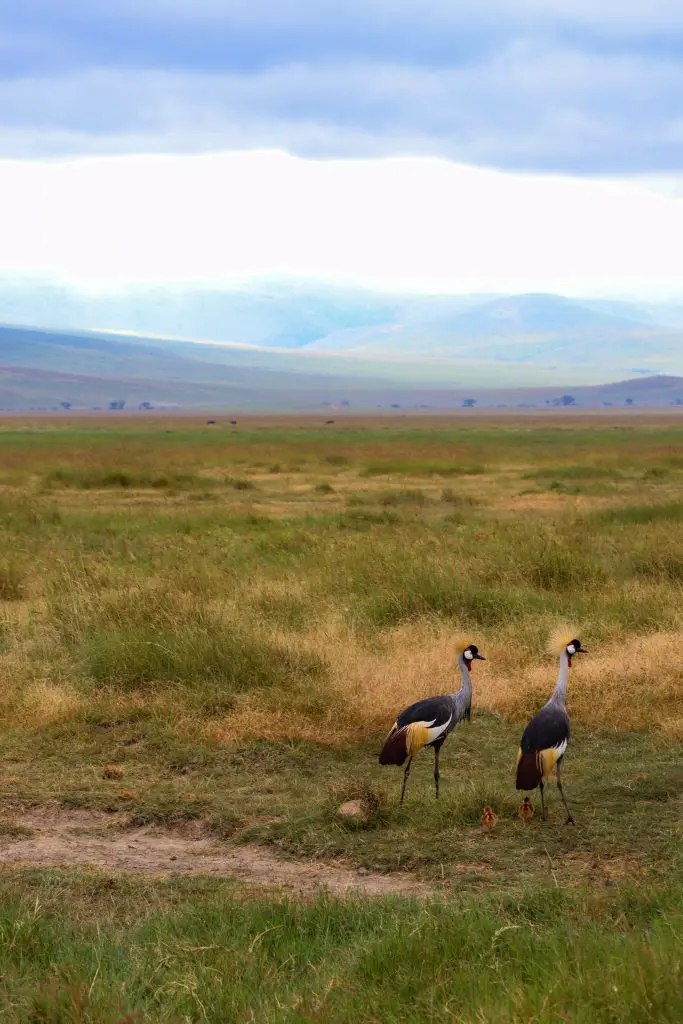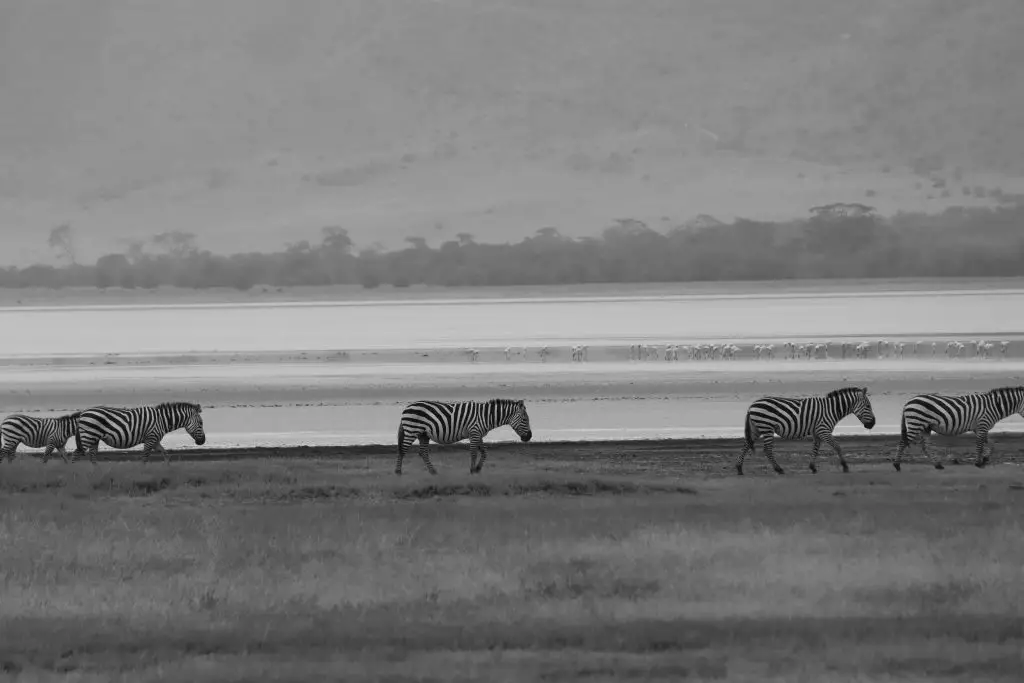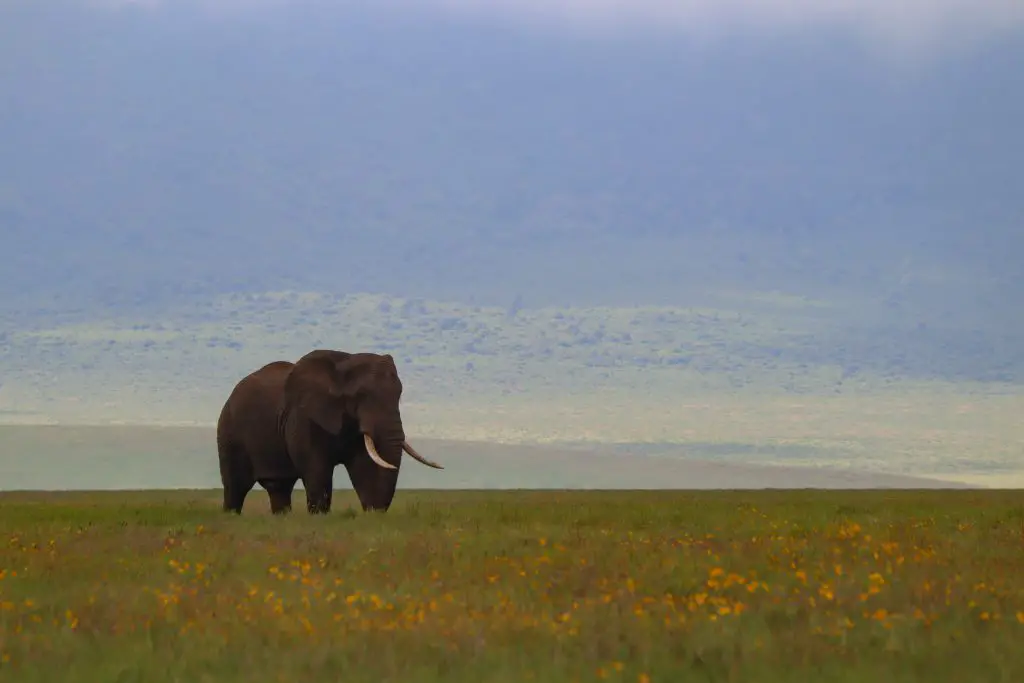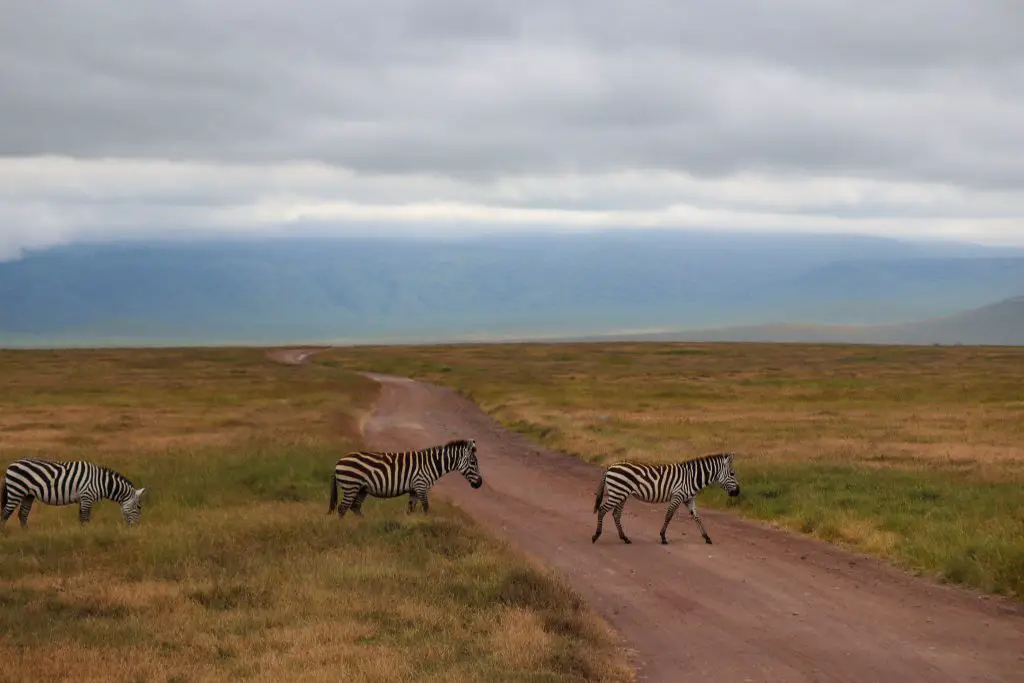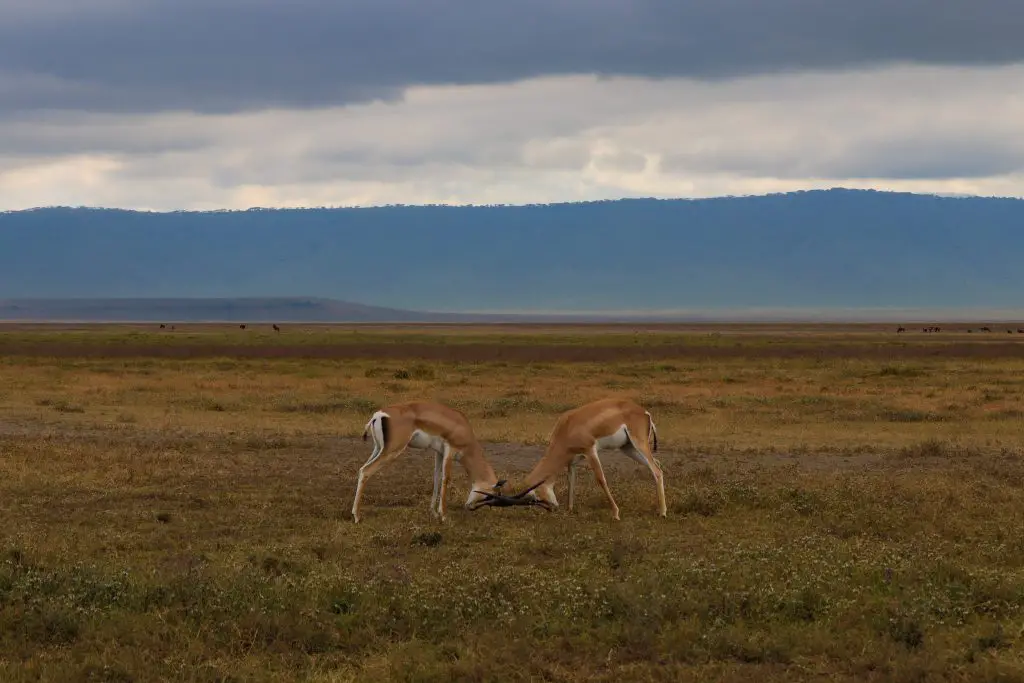Who has never dreamed of going on an adventure in a 4×4 to meet the wonderful wild animals of the African savannah? Drive at full speed in the footsteps of the most impressive and elegant animals in the world? Admiring scenes of animal life between a mother is her little one? Observe the hunting trips of African cats?
A safari is an extraordinary experience that can be experienced as close as possible to this wildlife in an entirely natural environment.
What is the best time to go on a safari in Tanzania?
Tanzania enjoys an equatorial climate where life is good all year round.
However, when planning your safari, there are some parameters to consider.
Indeed, Tanzania has two rainy periods:
- From March to June
- From October to December
Some will therefore advise you to avoid going on safari during the rainy season in order to maximize your chances of enjoying pleasant non-rainy weather.
However, by leaving during the dry season, from late June to October, you will not have the chance to witness the impressive wildebeest migration. This migration can be observed between April and June.
As for me, I went on a 5-day safari in Tanzania at the beginning of June. During this period I was able to witness the migration of the wildebeest and enjoy excellent weather without rain.
What is the programme for a 5-day safari in northern Tanzania?
Many agencies will offer you similar 5-day safari programs. However, you also have the possibility to choose the parks you wish to visit yourself. Indeed, if you opt for a private safari, you can negotiate with the agency the parks you want to visit.
As for me, I went on a safari alone, so I joined a group. There were 6 of us in the car with the same program.
This program included:
- Day 1 – Tarangire National Park
- Day 2 – Lake Manyara
- Day 3 – Serengeti National Park
- Day 4 – Serengeti National Park
- Day 5 – Ngorongoro Crater Conservation Area
Depending on the companies the program may have been in a different order, but you will usually see the same parks.
As for me, I found the program very good, it allows us to see the different parks with their own specificities.
The success of this program obviously depends a little bit on luck because your safari will be more or less successful depending on the animals you will have the opportunity to see.
For some 5 days is not enough if you have not had the chance to see everything but conversely, if you have the chance to see all the animals you wanted, a 5-day safari is enough.
Program for a 5-day safari in Tanzania
Having had this great opportunity to observe many animals during my 5-day safari, I will take this opportunity to give you an idea of what a safari in Tanzania is like.
For information, I have chosen a camping safari so it is easier for me to tell you about the 5-day camping safaris rather than the Lodge safaris.
Day 1 : 1-day safari in Tarangire National Park in Tanzania
For my part, before going on the safari I had already spent almost three months in Tanzania so I didn’t need to book a safari to pick me up directly at the airport etc.
The first day so a taxi picked me up at the hotel in Arusha to take me to an appointment point where I met my fellow travellers and our guide.
So we were 6 tourists (couples or single people) plus the guide.
Once the presentations are made, we leave for Tarangire National Park. This park is about a 2/3 hour drive from Arusha.
The cars used for safari in Tanzania’s northern parks are very similar. These are 4×4 types with a sunroof that allows you to get up to have a better view of the animals and the savannah.
So we arrived in the late morning at the entrance to the Tarangire Park.
From here, our guide distributes us meal trays for lunch. Be extremely careful, the picnic area is frequented by many monkeys who take advantage of the lack of attention of tourists to steal the meal (fruits, cookies, sandwiches…). Be careful because they are very smart and fast.
Once our stomach is full, we leave in our 4×4, open roof, to explore the Tarangire Park.
This park is particularly known for its baobabs and the many elephants that can be found there.
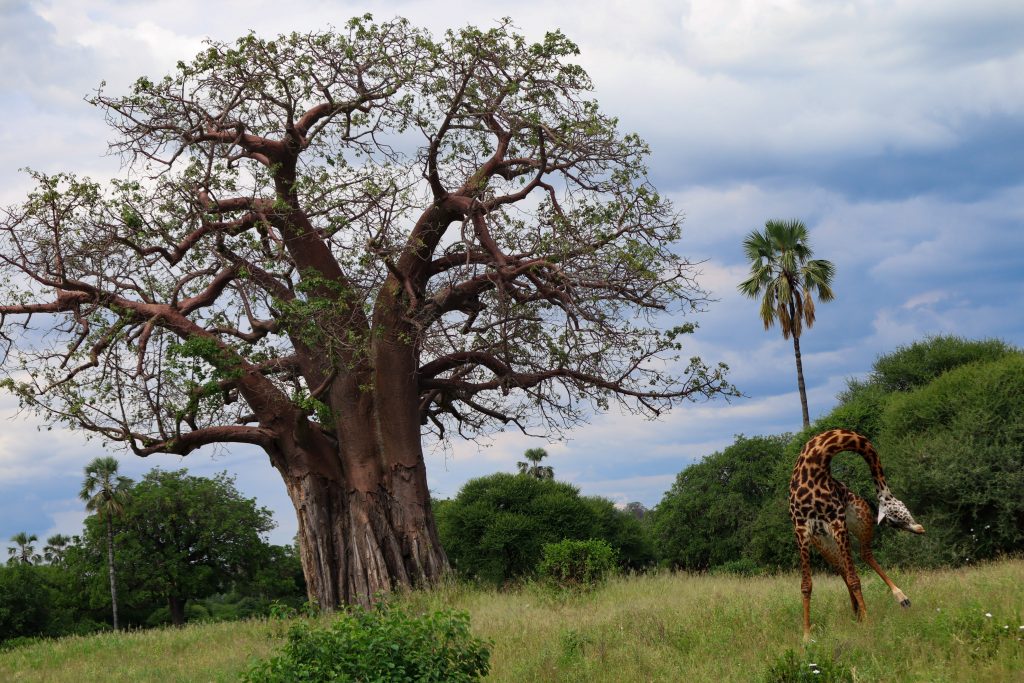
When we were walking around, I was surprised by all this greenery that I didn’t necessarily expect.
For this first day I could see antelopes, giraffes, elephants taking a mud bath, lionesses taking a nap under the trees, as well as beautiful views on this magnificent green park with all its baobabs.
After about 4 hours of walking in Tarangire Park, we headed to our campsite outside the park, only a few minutes away.
Once we settled in our tents, we gathered to drink a small beer for some and tea or coffee for others accompanied by popcorn.
At the end of the day, before dinner, we were given a small « aperitif » of tea/coffee and popcorn.
In addition to the guide, each group has its own cook. The meals served are not typical Tanzanian meals, but rather « European style » meals. The quality of meals depends on the talents of your cook. As for me, the meals were good although not very varied.
During our first evening, after dinner, we had a show of acrobatics and African music.
Of course, be aware that these activities take place in order to sell small souvenirs to tourists.
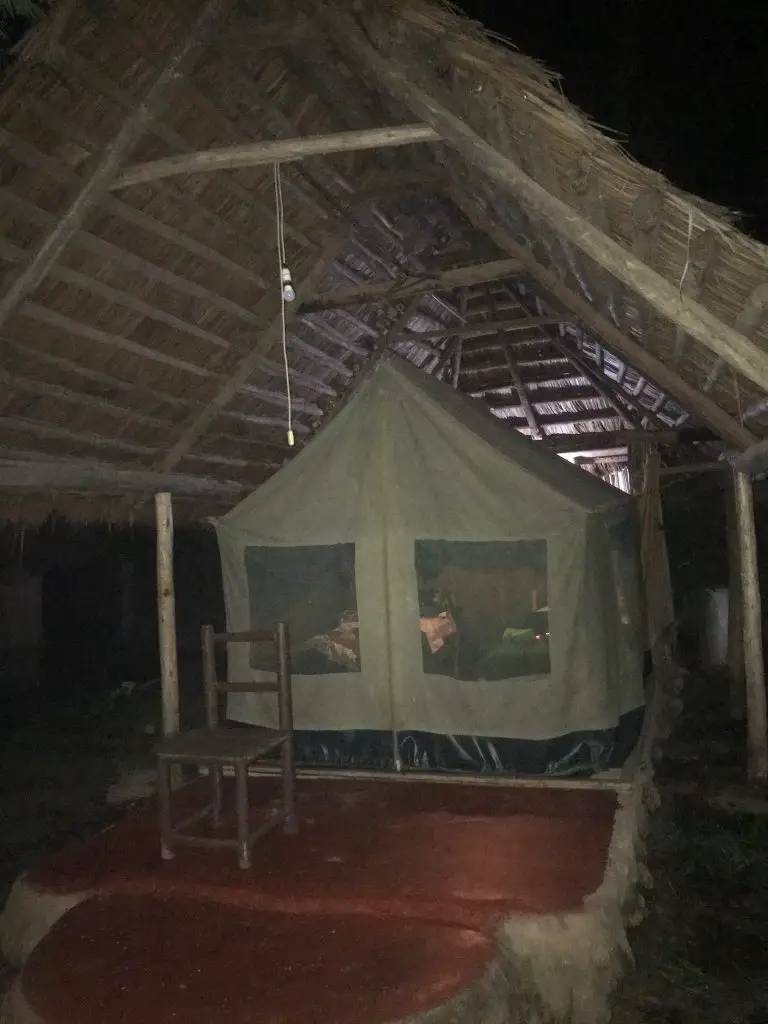
We would go to bed as a rule around 9:30pm/22pm.
Day 2 : 1-day-safari at Lake Manyara in Tanzania
The alarm clock rings and we get ready to have our first breakfast. Breakfasts are generally composed in a similar way, namely, fruit, eggs, ham, potatoes, tea/coffee, bread.
For our second day, we will head to Lake Manyara Park, located only 5 minutes from our campsite.
This park is amazing because we start in a dense and tropical forest. Many species of monkeys live there between the trees.
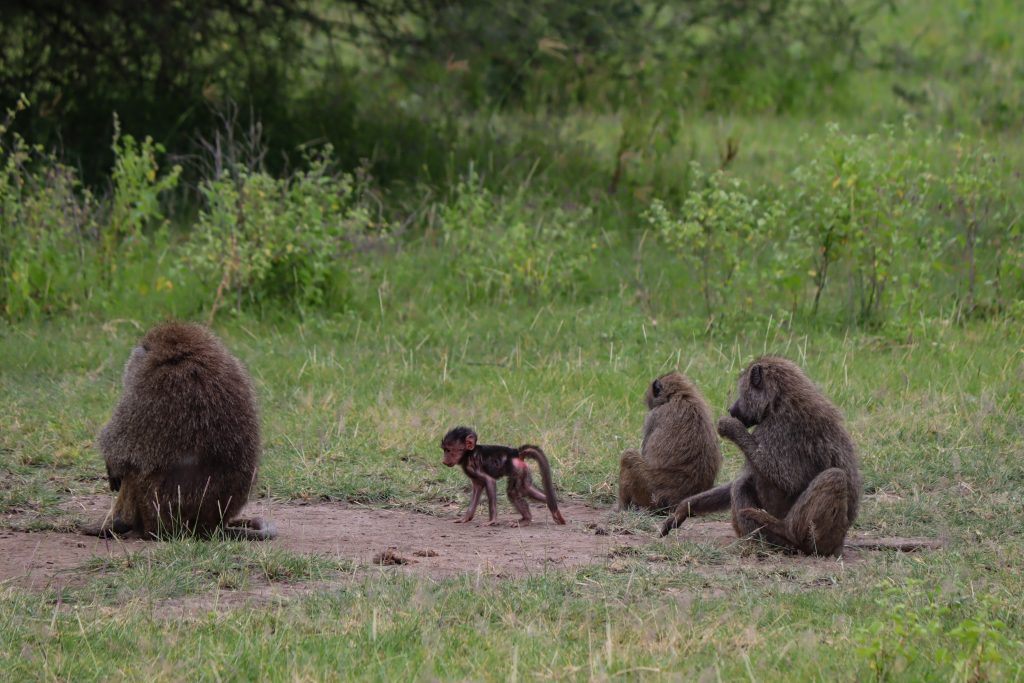
As you walk inside the park, you will discover the magnificent Lake Manyara, which is home to many species of birds in particular.
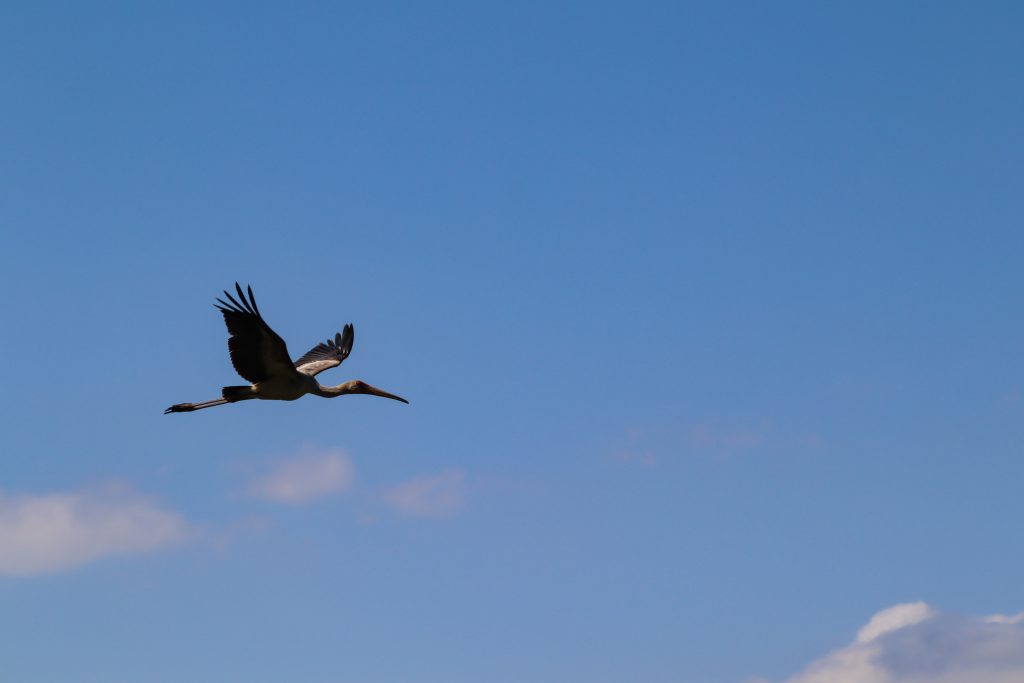
We can observe the animals that wander along this large lake.
During this day we were once again spoiled by seeing 3 lionesses perched in trees above the road and 3 others lying on the track. It forced us to turn around.
We also observed zebras, giraffes, elephants, antelopes, flamingos and other bird species but also hippos etc.
The day is cut off by a small picnic with boxing lunches prepared by our cook in the morning.
At the end of the day, after a good drive around Lake Manyara, we go back to the campsite.
Our second night was spent at the same campsite as the first one.
Be aware that at the organizational level, Africans are not the most stressed or even the most organized.
Indeed, it is not uncommon for the schedule to have to change compared to what was planned at the beginning… You have to know how to adapt, put things into perspective, take a step back! Believe me, for spending three months there, you’ll need it in Africa.
Day 3 & Day 4 : 2-day-Safari in Serengeti National Park in Tanzania
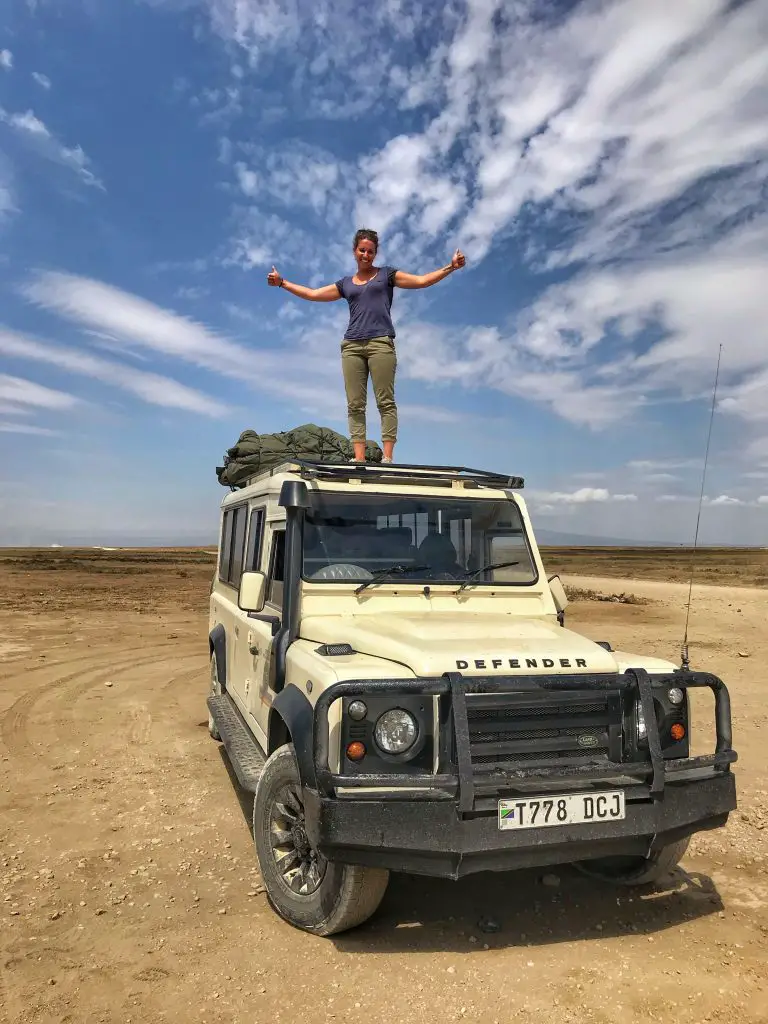
Departure early in the morning to reach the Serengeti Park which is 4 hours drive from our campsite. Take the opportunity to take a nap if you wish or to admire the landscapes of this magnificent country which is Tanzania.
The Serengeti is the most popular park, we arrive at the entrance of the park in the early afternoon. After a small picnic we start to get lost in the huge plains of the Serengeti.
Here, the landscape is very different, these are drier plains, much less greenery and trees than in the first parks.
It therefore seems easier to spot animals in the Serengeti.
The Serengeti reserve is home to many animals, on our first day we were able to observe a cheetah catching an antelope for its dinner, a leopard and its young, buffaloes and wildebeests, giraffes as well as a magnificent sunset in the middle of the African savannah with its exceptional colors.
After this magnificent sunset, head for the campsite. This time it is a less luxurious, simpler campsite in the middle of the savannah, which is an exciting experience. Indeed, our tents are set up in the middle of the Serengeti with all the animals that can roam around us at night.
Of course, some security measures must be taken:
It is strongly discouraged to eat in your tent at night or even to keep food in your tent. Indeed, the « meal » area is in a dining area protected by grills so as not to be attacked by animals.
If you get up at night to go to the toilet, be careful, there may be animals lurking around the tents. Your guide will probably tell you his little anecdotes about the accidents he may have witnessed during his years of experience.
Don’t be surprised, at night you can often hear the hyenas around you.
It’s a great experience, you won’t be disappointed.
The next day, wake up at dawn to enjoy the sunrise in the Serengeti. Indeed, after breakfast, we leave to watch the sunrise amidst the wildlife of the Serengeti.
Personally, the sunset and sunrise were among the most beautiful moments I experienced during this safari.
The fourth day started off strong with lions and lionesses. The first male lions we see. Later we saw elephants, zebras, hippos, cheetahs, leopards, etc.
The visit to the Serengeti ended with the migration of some of the wildebeest. It was impressive to be surrounded by so many animals running all over the place.
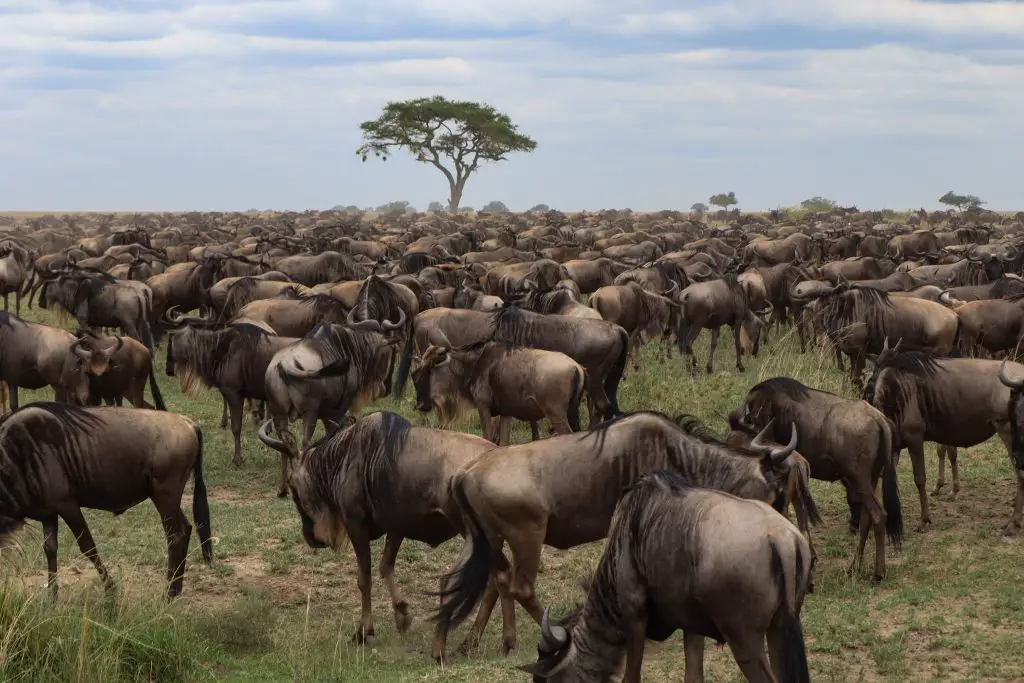
We head quietly to the exit of Serengeti Park, towards our last camp near the Ngorongoro Crater.
This camp was located at the top of the Ngorongoro crater, at an altitude of 700 meters. It was cold, cold shower… so get ready!
Day 5 : 1-day in the Ngorongoro Crater Reserve in Tanzania
The last day of the safari begins with a descent into the Ngorongoro Crater. It is an ancient volcano that has collapsed, making it a 700-metre deep crater that is home to many wild animals.
The day started quickly because we hadn’t even gotten to the bottom of the craters when a lioness came out of nowhere and jumped on the road right next to our car.
Then a few meters further down, once we reached the bottom of the crater, we saw a lion and a lioness, lying quietly watching the buffalo around them.
The Ngorongoro Crater is home to a large population of animals in Africa. We were able to observe zebras, giraffes, elephants, lions, hyenas, and especially a rhinoceros. Although there are only 20 of them left in this reserve, we were lucky enough to see one from a distance… But that’s something!
It was the last Big Five animal to see (elephants, lions, rhinos, leopard buffaloes).
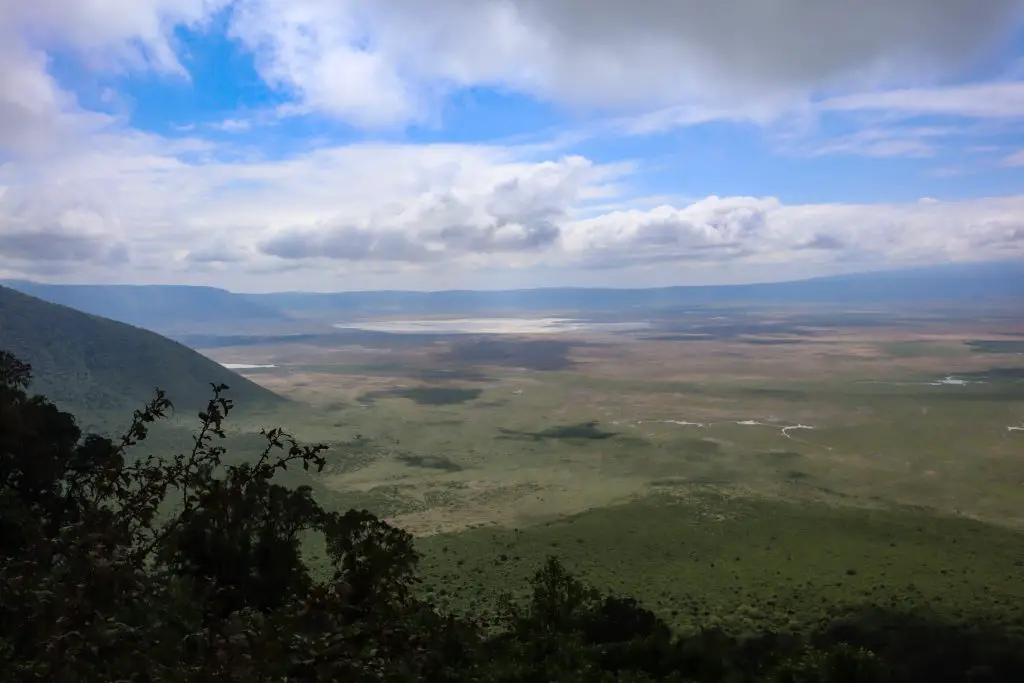
After a good day of wandering in Ngorongoro Park, we slowly returned to Arusha where our guide dropped us off at the end of the evening.
How much does a 5-day safari in Tanzania cost?
No matter where you go, be aware that a safari is necessarily a relatively expensive activity compared to other activities.
Obviously, the price of the safari will depend on the duration of your safari but also on the choice of accommodation.
A safari in a lodge will cost much more than a camping safari because the more comfort you want, the more you will have to pay.
Also, a private safari will cost more than a safari in a shared car.
There are therefore many criteria to consider when looking at the price of the safari.
To give you an idea, I have prepared the following two tables.
The first one shows the entrance fees to each of the parks per person:
| North of Tanzania National Park | Fees per person |
| Serengeti National Park | 80$US for 24 hours |
| Ngorongoro Crater | US$80 + US$295 per car |
| Lake Manyara | US$53 |
| Tarangire National Park | US$53 |
The second table gives a range of rates for a 5-day safari in Tanzania depending on the options chosen (after negotiations). The more you travel, the more attractive the fare will be.
In my painting, I take the example of a person travelling alone (my case when I went on safari) or a couple.
| Type of safari for 5 days | Type of habitat | Safari price for 5 days /pers |
| Private Safari (2 pers.) | Camping | 900$US – 1 200$US |
| Private Safari (2 pers.) | Lodge | 1,300$US – 3,500$US |
| Shared Safari (max 6 pers.) | Camping | 700$US – 900$US |
| Shared Safari (max 6 pers.) | Lodge | US$1,500 – US$4,000 (additional $200 for 1 person) |
How to dress for a safari?
For a safari, it is important to dress comfortably and cover yourself enough because with the sunroof you can quickly get cold at the throat.
It is therefore advisable to always keep a small jacket with you.
Also, take a scarf that will allow you to cover yourself with dust because there are many of them.
For more information about what to wear on a safari, I advise you to read my article « What to pack for a safari in Tanzania » where I describe in detail the things I brought for my safari.
If you liked this article, I recommend one of the following articles on the same topic:

